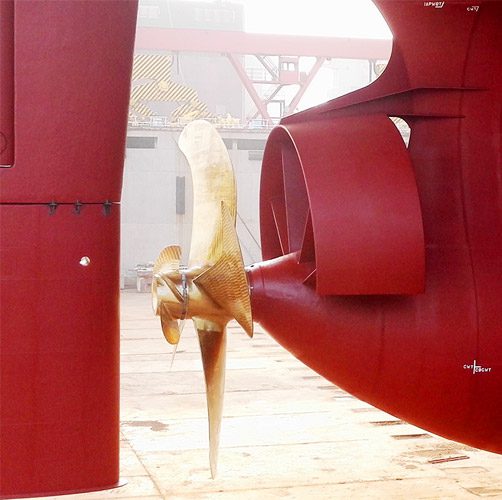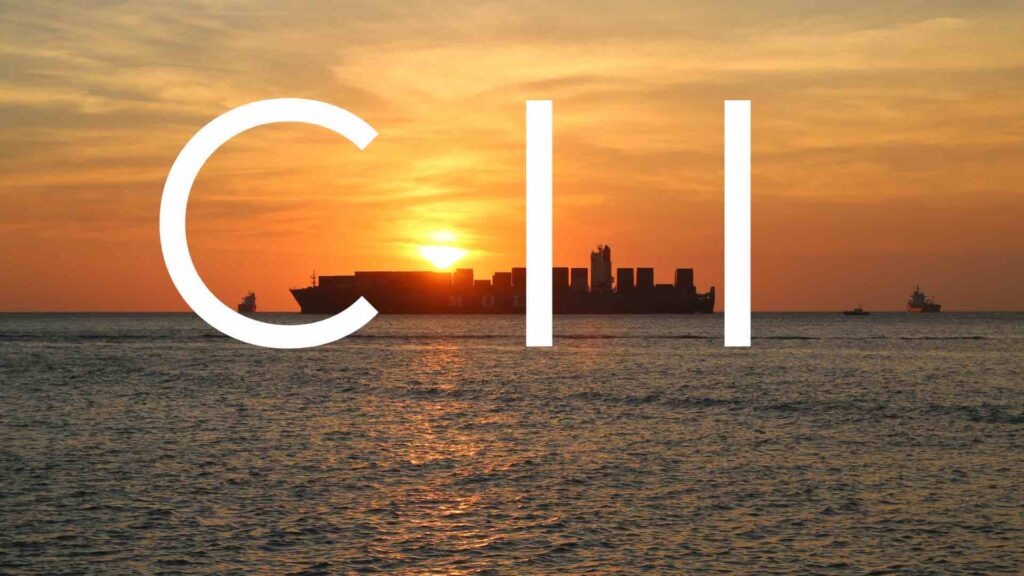28 November 2024
How energy-saving technologies can help CII rating

How can energy-saving technologies, also referred to as energy-saving devices, help you comply with CII? If you want hard data and real-world examples from vessel operators, Wärtsilä’s recent webinar is a must-watch.
70% of webinar participants revealed they were planning upgrades, while 0% needed no upgrades. What’s behind these stark figures?
Background
Let’s start with some facts. The IMO’s CII regulations call for a 40% reduction in carbon intensity by 2030 and a 70% reduction by 2050. If you’re a merchant vessel operator who hasn’t taken any action yet, your vessel is likely part of the 45% of the fleet that won’t comply. These figures make it crystal clear that urgent action is needed now.
70% – reduction in carbon intensity needed by 2050
45% – of vessels will not comply without upgrades
25% – of webinar participants are unsure about their upgrade plans
How can energy-saving technologies help comply with CII?
During the webinar Figosta Zhou, General Manager, Technical Sales at Wärtsilä, discussed some practical examples based on modeling data from a Capesize bulker and a NeoPanamax container ship.
Bulk Carrier
The 180,000 DWT bulker sailed 73,000 nautical miles and consumed 11,000 tons of heavy fuel oil (HFO) in 2021, attaining a CII rating of 2.599, which equals a C grade. Based on Wärtsilä’s data modeling, the vessel could achieve CO2 and GHG vessel emission reduction of:
5–9% with a combination of Propeller Boss Cap Fins (PBCF), innovative pre-swirl stator, and an optimized propeller
7–10% with a combination of Propeller Boss Cap Fins (PBCF), air lubrication, and an optimized propeller, or
24–28% with a combination of a shaft generator, an optimized propeller, and four-rotor sails
Without any upgrades, the vessel will fall out of compliance in 2024 with a D rating. With one of the upgrade combinations mentioned above the vessel would benefit from a compliance extension of three to four years. In other words, if you were the vessel owner, 2027 would be your last chance to do something to prevent your vessel from becoming non-compliant.

Containership
In the container ship case, the 158,000 DWT, 15,000 TEU vessel sailed 74,000 nautical miles and consumed 21,000 tons of HFO in 2021, attaining a CII rating of 5.669, which equates to a C grade. Based on Wärtsilä’s data modeling, the vessel could achieve CO2 and GHG vessel emission reduction of:
4–8% with a combination of an optimized propeller and air lubrication
5–7% with a combination of Propeller Boss Cap Fins (PBCF), innovative pre-swirl stator, and an optimized propeller, or
7–10% with a combination of Rudder Bulb, a shaft generator, and air lubrication
Without any upgrades, the vessel will fall out of compliance in 2024– 2025. As with the bulker, with any combination of upgrades mentioned above the vessel would benefit from a compliance extension of three to four years.
“The numbers make it clear that upgrades are a no-brainer, given their relatively modest CAPEX.”
Figosta Zhou, General Manager, Technical Sales at Wärtsilä
Without them, you could lose out on up to four years of profitable operations. You could also be left with a stranded asset and the expense of investing in a new vessel.
How is CII affecting real fleets today?
According to Anders M. Sorheim, Sustainability and CO2 Performance Manager for Klaveness Ship Management, CII requirements are already having an effect. He highlights that maintaining a clean hull and propeller goes a very long way since overcoming the friction between the hull and the water eats up at least 70% of the energy needed to move the vessel forward.
“Action has to be taken now. Waiting five years until the next dry dock is not an option.”
Anders M. Sorheim, Sustainability and CO2 Performance Manager for Klaveness Ship Management
As well as keeping their hulls and propellers squeaky clean, Klaveness Ship Management is also investing in energy-saving technologies. They have installed or are rolling out pre-swirl stators, air lubrication systems, and rotor sails. They have also shortened their dry-docking interval to two and half years both for hull cleaning purposes and to give themselves more opportunities to install new technologies.
How do energy-saving technologies help avoid slow steaming?
Gurpreet Sandhu, Head of Fleet Management, Dry Docking, and Repair at Berge Bulk is also a big believer in first picking the low-hanging fruit, like hull cleaning. According to the annual efficiency rating, today the company’s vessels are operating 45% more efficiently compared to 2008 levels.

Underwater cleaning of ship hull – Explained
This is everything you need to know about commercial underwater cleaning operations for a ship hull and its dangers.
Ship Nerd
Gurpreet puts this down to a combination of investments in energy-saving technologies and best management practices from the crews. While this has helped the company cut fuel bills and emissions, future speed reductions as regulations tighten are still a concern. Gurpreet points out that this is precisely where energy-saving technologies come in – they can help you avoid speed reductions so that your vessels remain attractive to charterers. Berge Bulk has already installed air lubrication systems, shaft generators, and solar panels. Next year they plan to install rotor sails.
Are energy-saving technologies proven to work?
Rave Al-Chamary, Product Manager, Energy Saving Technologies at Wärtsilä, highlights that all the currently available technologies discussed have been proven on numerous vessels. There is no question that they help cut emissions and enable CII compliance. The demand for these technologies is bound to increase as CII starts to kick in and vessel operators scramble to comply. Demand could outstrip supply. And even if the hardware is available, you might struggle to find a shipyard with a free slot to install it.
The only note of caution was to not think about it for too long. Waiting is not a viable strategy. The environment cannot wait for us to decide, so you need to take action now.
Source: Wartsila
See Also
The Carbon Intensity Indicator, CII calculation is one of the top hits in the past month. We debunk its complexity by simplifying the procedures based on IMO guidelines.

CII Calculation: Carbon Intensity Indicator Guide
How to calculate the CII rating? We debunk its complexity by simplifying the procedures based on IMO guidelines.


